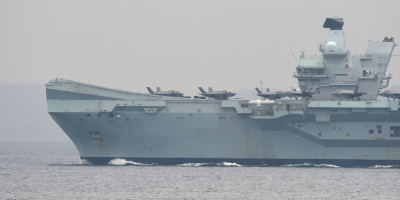Belden's guide to Naval Cybersecurity
While Pirates with eye patches and parrots no longer pose a threat, Naval vessels are prime targets for cyber-attacks due to the critical nature of their operations and the sensitive information they handle. The cybersecurity strategies implemented on Navy vessels need to be robust and multifaceted, addressing various potential vulnerabilities.
The sophisticated nature of military cyber threats necessitates more advanced defences than those used in commercial settings and Firewalls and Intrusion Detection/Prevention Systems (IDS/IPS) play an important role in protecting naval networks from cyberattacks. For example, the U.S. Navy's Naval Network Warfare Command (NNWC) utilises advanced firewalls and IDS/IPS solutions to safeguard its networks.
Secure communication protocols such as IPsec and TLS are essential to ensure the confidentiality and integrity of naval communications. An exemplary standard is the NATO STANAG 4406, which prescribes secure messaging protocols for communication among NATO naval forces. These protocols are crucial for maintaining secure and reliable communication channels within and between naval fleets.
Network segmentation and microsegmentation are critical strategies for isolating sensitive naval systems and preventing a ‘lateral movement attack’ whereby the cyber intruders gain access to one system and then move through other systems till they reach their chosen target. The Royal Navy, for instance, employs network segmentation to segregate its command and control systems from other, less critical networks. This isolation helps in containing breaches and limiting the impact of any security incidents.
Multi-Factor Authentication (MFA) enhances access control by requiring multiple forms of verification for user and device authentication. This method is crucial for securing access to sensitive network areas, IP ranges, applications, and protocols. The Australian Navy's use of MFA tokens for secure access to classified networks onboard ships is a notable example. MFA reduces the risk of unauthorized access, even if login credentials are compromised.
Real-time monitoring and forensic analysis of security events are key components of a reliable incident response workflow. These measures enable the rapid detection and response to cybersecurity incidents. The British Royal Navy, for instance, has implemented various technologies to monitor and respond to cybersecurity threats onboard its vessels. This capability is essential for maintaining operational security and swiftly addressing any breaches.
Naval vessels require comprehensive cybersecurity measures tailored to military challenges, helping to safeguard national security and maintain the operational readiness of naval fleets. Belden are ready to help fire a shot across the bow of would-be attackers with their suite of industrial cybersecurity products. Belden's vision is to create and safeguard a resilient, trustworthy network for the future, facilitating a secure transition to a digital world. Speak to Aerco today to find out more about Belden.




.png)